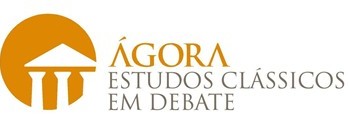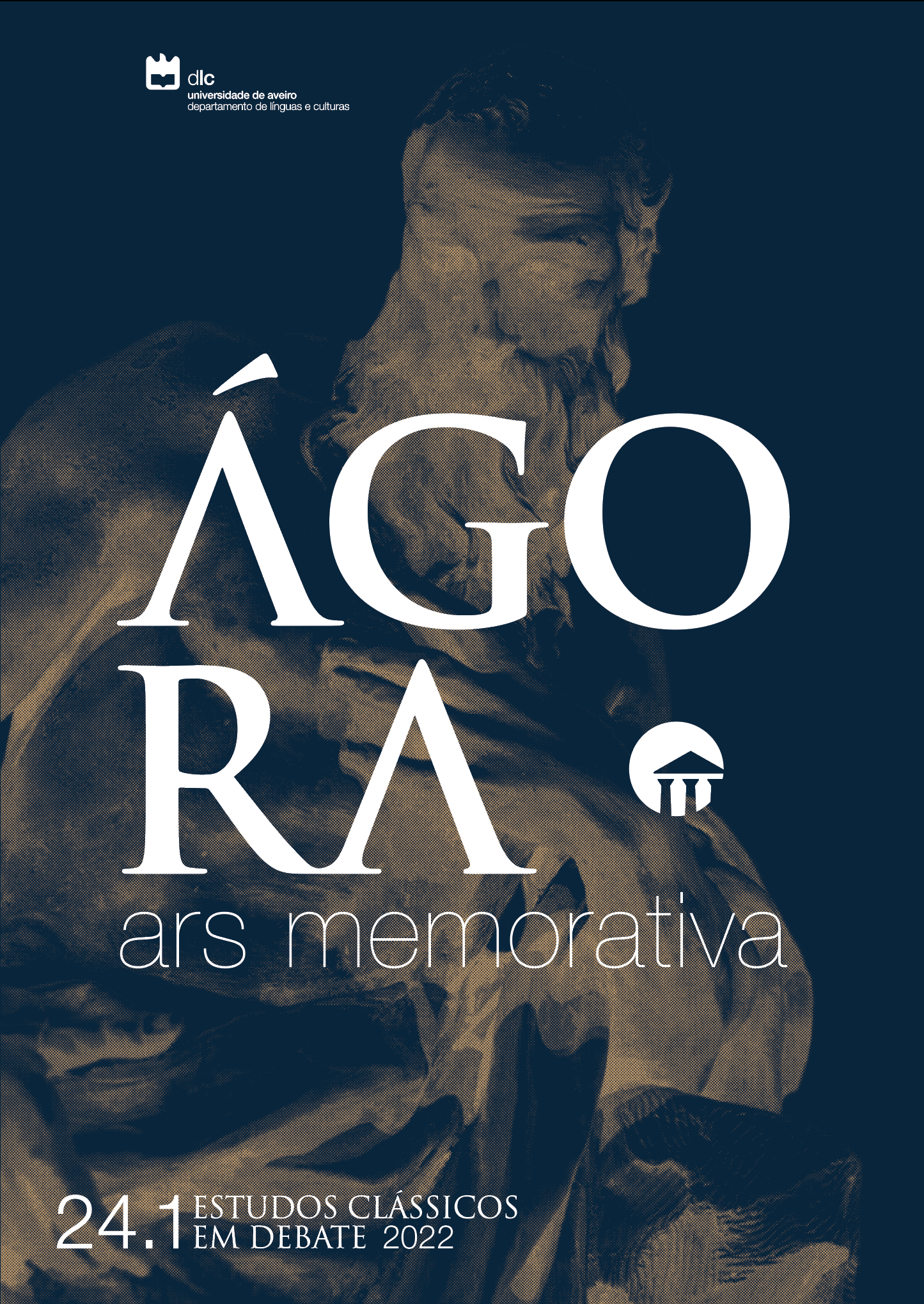Associations in Late Medieval Art of Memory (example of the Czech lands)
Keywords:
art of memory, associations, medieval Bohemia, medieval manuscripts, medieval Latin, rhetoric
Abstract
Using two late medieval treatises from Bohemia as examples, the study presents various ways of creating images in the context of the art of memory, showing a tension between relying on common, generally shared associations which the mind easily interprets, and using rare, personal connections which are imprinted in one’s mind more deeply. The tension remains unresolved: both methods are applied in the art of memory, the actual choice seems to be ad hoc. Both types of associations provide a unique and so far neglected insight into the medieval mind.
Downloads
Download data is not yet available.
References
Manuscripts
Brno, Moravský zemský archiv, G.11, MS 964
Praha, Národní knihovna, I G 11a
Primary sources
AdHer = Cicero. Rhetorica Ad Herennium, trans. Harry Caplan (1954). Loeb Classical Library 403. Cambridge, MA, Harvard University Press.
Secondary sources
COPELAND, R. & SLUITER, J. (eds.) (2012), Medieval Grammar and Rhetoric: Language Arts and Literary Theory, AD 300-1475. Oxford, Oxford University Press.
DIENSTBIER, J. (2017), “Neidhart’s Pranks and Mural Paintings in Medieval Bohemia”: Umění Art 65: 5-6 (2017) 438-459.
DIENSTBIER, J. (2020), “‘Baba a čert’ (Old Hag and the Devil)”: Staré Baby. Ženy a čas v pozdně středověké Evropě (Old Hags, Women and Time in Medieval Europe): V. BAŽANT et alii (eds.) (2020). Praha, Nakladatelství Lidové noviny, 109-130.
DINKOVA-BRUUN, G. (2018), “Libera nos a malo: Luxuria as evil in the preaching manual Qui bene presunt”: Mediaeval Studies 80 (2018) 231-252.
DOLEŽALOVÁ, L. (2018), “Late Medieval Personal Miscellanies: The Case of Mattheus Beran (d. 1461), Augustinian Canon of Roudnice nad Labem”: Collecting, Organizing and Transmitting Knowledge. Miscellanies in Late Medieval Europe: S. CORBELLINI, G. MURANO & G. SIGNORE (ed.) (2018): Bibliologia. Elementa ad librorum studia pertinentia 49. Turnhout: Brepols, 179-196.
DOLEŽALOVÁ, L. (2021), “The art of memory copied by Iohannes de Fredelant in 1461 (MS Praha, Národní knihovna, I G 11a, ff. 31r–41v): A contribution to the reception of the Memoria fecunda treatise”: Daphnis. Zeitschrift für Mittlere Deutsche Literatur und Kultur der Frühen Neuzeit (1400-1750) 50 (2021) 144-162.
DOLEŽALOVÁ, L., KISS F. G. & WÓJCIK, R. (2016), The Art of Memory in Late Medieval East Central Europe. Budapest-Paris, LʼHarmattan.
HEIMANN-SEELBACH, S. (2000), Ars und Scientia. Genese, Überlieferung und Funktionen der mnemotechnischen Traktatliteratur im 15. Jahrhundert. Mit Edition und Untersuchung dreier deutscher Traktate und ihrer lateinischen Vorlagen. Frühe Neuzeit 58, Berlin, De Gruyter.
HODNE, L. (2009), “The Turtledove: a Symbol of Chastity and Sacrifice”: IKON. Journal of Iconographis Studies 2 (2009) 159-166.
HOFFMANN, F. (1982), “Candela rhetoricae: fikce a skutečnost v předhusitské příručce rétoriky” (Candela rhetoricae: Fiction and Reality in a pre-Hussite rhetorical textbook). Studie o rukopisech (Studien über Handschriften) 21 (1982) 73-113.
HOURIHANE, C. (ed.) (2017), The Routledge Companion to Medieval Iconography. New York, Routledge.
KAHNEMAN, D. (2011), Thinking, Fast and Slow. New York, Farrar- Straus and Giroux.
KUBÍN, P. (2016), “Saint Procopius of Sázava between Reality and Fiction”: Revue Mabillon 27 (2016) 49-81.
QUIRK, R. (1974), The Linguist and the English Language. London, Edward Arnold.
ROZUM, K. (1907), “Peruchty, perychty, peruty na Podřipsku” (Peruchtas, Perychtas, Perutas in the area around the Říp mountain): Český lid (Czech folk) 16:8 (1907) 384-386.
SOMMER, P. (ed.) (2005), Der heilige Prokop. Böhmen und Mitteleuropa. Praha.
TORRE, A. (forthcoming), “The Mnemonic Metaphor of the Wound in the Italian and Latin Works of Petrarch”: J. ČERMÁK & L. DOLEŽALOVÁ (eds.), What Words Remember and Other Stories. Turnhout, Brepols.
WATTENBACH, W. (1863), Candela rhetoricae. Eine Anleitung zum Briefstil aus Iglau. Wien, K. K. Hof- und Staatsdruckerei.
ZÍBRT, Č. (1895), “Bájeslovné drobnosti ze začátku věku XV: (Vodní muž – Perchta)” (Mythical trifles from the beginning of the 15th century: (Water goblin – Perchta)): Český lid (Czech Folk) 4:6 (1895) 523.
ZÍBRT, Č. (1910), “Masopust držíme…” Veselé chvíle českého lidu (We are keeping carnival…: Merry moments of the Czech folk) 2, Praha, F. Šimáček.
Brno, Moravský zemský archiv, G.11, MS 964
Praha, Národní knihovna, I G 11a
Primary sources
AdHer = Cicero. Rhetorica Ad Herennium, trans. Harry Caplan (1954). Loeb Classical Library 403. Cambridge, MA, Harvard University Press.
Secondary sources
COPELAND, R. & SLUITER, J. (eds.) (2012), Medieval Grammar and Rhetoric: Language Arts and Literary Theory, AD 300-1475. Oxford, Oxford University Press.
DIENSTBIER, J. (2017), “Neidhart’s Pranks and Mural Paintings in Medieval Bohemia”: Umění Art 65: 5-6 (2017) 438-459.
DIENSTBIER, J. (2020), “‘Baba a čert’ (Old Hag and the Devil)”: Staré Baby. Ženy a čas v pozdně středověké Evropě (Old Hags, Women and Time in Medieval Europe): V. BAŽANT et alii (eds.) (2020). Praha, Nakladatelství Lidové noviny, 109-130.
DINKOVA-BRUUN, G. (2018), “Libera nos a malo: Luxuria as evil in the preaching manual Qui bene presunt”: Mediaeval Studies 80 (2018) 231-252.
DOLEŽALOVÁ, L. (2018), “Late Medieval Personal Miscellanies: The Case of Mattheus Beran (d. 1461), Augustinian Canon of Roudnice nad Labem”: Collecting, Organizing and Transmitting Knowledge. Miscellanies in Late Medieval Europe: S. CORBELLINI, G. MURANO & G. SIGNORE (ed.) (2018): Bibliologia. Elementa ad librorum studia pertinentia 49. Turnhout: Brepols, 179-196.
DOLEŽALOVÁ, L. (2021), “The art of memory copied by Iohannes de Fredelant in 1461 (MS Praha, Národní knihovna, I G 11a, ff. 31r–41v): A contribution to the reception of the Memoria fecunda treatise”: Daphnis. Zeitschrift für Mittlere Deutsche Literatur und Kultur der Frühen Neuzeit (1400-1750) 50 (2021) 144-162.
DOLEŽALOVÁ, L., KISS F. G. & WÓJCIK, R. (2016), The Art of Memory in Late Medieval East Central Europe. Budapest-Paris, LʼHarmattan.
HEIMANN-SEELBACH, S. (2000), Ars und Scientia. Genese, Überlieferung und Funktionen der mnemotechnischen Traktatliteratur im 15. Jahrhundert. Mit Edition und Untersuchung dreier deutscher Traktate und ihrer lateinischen Vorlagen. Frühe Neuzeit 58, Berlin, De Gruyter.
HODNE, L. (2009), “The Turtledove: a Symbol of Chastity and Sacrifice”: IKON. Journal of Iconographis Studies 2 (2009) 159-166.
HOFFMANN, F. (1982), “Candela rhetoricae: fikce a skutečnost v předhusitské příručce rétoriky” (Candela rhetoricae: Fiction and Reality in a pre-Hussite rhetorical textbook). Studie o rukopisech (Studien über Handschriften) 21 (1982) 73-113.
HOURIHANE, C. (ed.) (2017), The Routledge Companion to Medieval Iconography. New York, Routledge.
KAHNEMAN, D. (2011), Thinking, Fast and Slow. New York, Farrar- Straus and Giroux.
KUBÍN, P. (2016), “Saint Procopius of Sázava between Reality and Fiction”: Revue Mabillon 27 (2016) 49-81.
QUIRK, R. (1974), The Linguist and the English Language. London, Edward Arnold.
ROZUM, K. (1907), “Peruchty, perychty, peruty na Podřipsku” (Peruchtas, Perychtas, Perutas in the area around the Říp mountain): Český lid (Czech folk) 16:8 (1907) 384-386.
SOMMER, P. (ed.) (2005), Der heilige Prokop. Böhmen und Mitteleuropa. Praha.
TORRE, A. (forthcoming), “The Mnemonic Metaphor of the Wound in the Italian and Latin Works of Petrarch”: J. ČERMÁK & L. DOLEŽALOVÁ (eds.), What Words Remember and Other Stories. Turnhout, Brepols.
WATTENBACH, W. (1863), Candela rhetoricae. Eine Anleitung zum Briefstil aus Iglau. Wien, K. K. Hof- und Staatsdruckerei.
ZÍBRT, Č. (1895), “Bájeslovné drobnosti ze začátku věku XV: (Vodní muž – Perchta)” (Mythical trifles from the beginning of the 15th century: (Water goblin – Perchta)): Český lid (Czech Folk) 4:6 (1895) 523.
ZÍBRT, Č. (1910), “Masopust držíme…” Veselé chvíle českého lidu (We are keeping carnival…: Merry moments of the Czech folk) 2, Praha, F. Šimáček.
Published
2022-06-23
Section
Articles










